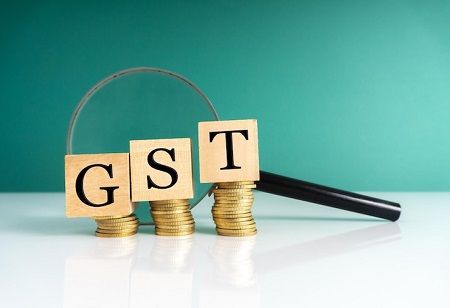Zeenat Parween, Correspondent, India Pharma Outlook

The recent GST Reform by the Government of India to exempt individual health and life insurance premiums, along with the rationalization of healthcare goods and services, marks a landmark step in its mission of achieving Affordable Healthcare and “Health for All.” These reforms strike a balance between the wellbeing of citizens and economic development by reducing the financial stress on households while strengthening the healthcare ecosystem.
By exempting health and life insurance premiums, the increasing role of the private coverage in addition to the public programmes like Ayushman Bharat and PMJAY (Pradhan Mantri Jan Arogya Yojana) is acknowledged. Although PMJAY subsidizes the poor, middle-class families have to deal with high out-of-pocket expenses. Economical premiums will increase insurance uptake, minimise financial exposure, and enhance risk pooling.
The reforms are also aimed at making essential medicines affordable with GST lowered from 12 percent to 5 percent or nil. This is critical in the long-term treatment of chronic diseases such as diabetes, hypertension and cancer, which create recurrent household costs.
Also Read: How PLI Scheme is Reshaping India's Drug Production Future
"The GST reforms under healthcare can be a significant enabler. Only 41% households in India are covered through either govt or private health insurance schemes leaving a significant gap to be covered. Similarly, life insurance penetration has been witnessing a decline rather than an increasing trend. Reduction in GST from 18% to nil should give a boost to both these segments which are critical for citizens. The GST reduction in diagnostic kits and reagents to 5% should also catalyse the focus on preventive health. Overall important moves for the sector," said Vishal Bali, Executive Chairman, Asia Healthcare Holdings (AHH).
On the same note, reduced GST on devices like oxygen, gauze, surgical gloves, and glucometers will lead to a reduction in the costs of delivering health care to both hospitals and clinics, especially in the tier-2 and tier-3 cities where affordability is a hindrance. This promotes the increased use of modern diagnostic and treatment tools and promotes more equitable access to healthcare.
Emphasis has also been laid on preventive health. Lowering the GST on gyms and fitness centers from 18 percent to 5 percent aligns with the Fit India Movement, which promotes healthier lifestyles and helps address the rising burden of non-communicable diseases. Simultaneously, no tax reductions were applied to harmful goods, including tobacco, pan masala, or sugary beverages, which proves a clear attempt to avoid unhealthy consumption. This measure goes beyond taxation and reflects a shift in health policy priorities from treatment to prevention.
The prevalence of lifestyle disease like obesity, cardiovascular disease and diabetes is rapidly increasing in India and besides disrupting the personal health, it also raises the costs of further healthcare provision to the families and the public system. By making fitness more affordable, the government is encouraging proactive health choices, especially among youth and working professionals who often neglect preventive care due to cost or convenience barriers.
Gyms, yoga centers, fitness clubs are becoming more affordable to the middle-class households and this can change the culture of wellness. In the long term, these reforms would help decrease the disease burden, improve productivity, and offload hospitals otherwise overloaded with preventable illnesses. In this regard, tax cut on fitness services is an economic and public health intervention.
Also Read: Pharmaceutical Procurement Strategies: How to Optimize Costs
Dr. GSK Velu, Chairman & Managing Director, Trivitron Healthcare, Neuberg Diagnostics and Maxivision Super Speciality Eye Hospitals said, “These new GST reforms are path breaking and should overall boost our economy and benefit every citizen of India. We welcome the decision to reduce GST from 12 percent to 5 percent for medical devices, diagnostics instruments and reagents. We also welcome the nil GST on medical insurance, general insurance and few lifesaving drugs. Also if the well-intended reforms on GST reforms and resolution to inverted duty structure is well implemented it will benefit all industries and will ensure desired benefit reaches end consumers."
Inclusiveness is evident in the lowering of GST on spectacles, lenses and contact lenses to 5 percent, which has made the vision correction more affordable by the low-income earners, students and the elderly. This reform can be used to enhance productivity and quality of life as almost 10 crore Indians do not have spectacles.
Rationalization applies to the peripheral healthcare too. Not only does reducing GST on pharmaceutical job-work and biomedical waste treatment reduce costs, but it also corrects inverted duty structures and supports the reputation of India as the “Pharmacy of the World”, which allows it to compete internationally while maintaining domestic affordability.
In a larger context, the GST reforms are an indication of citizen-focused system of taxation that enhances comfort of living and empowering small-scale enterprises. They complement the reform agenda of the government— combining fiscal prudence with targeted social investment.
To sum up, the government has made healthcare more affordable, accessible, and sustainable by skipping insurance payment, cutting down taxes on essential medicines and devices, encouraging preventive health, and deterring harmful consumption. These reforms provide immediate savings to the households and promote the change in the healthcare scenario in India in the long term.